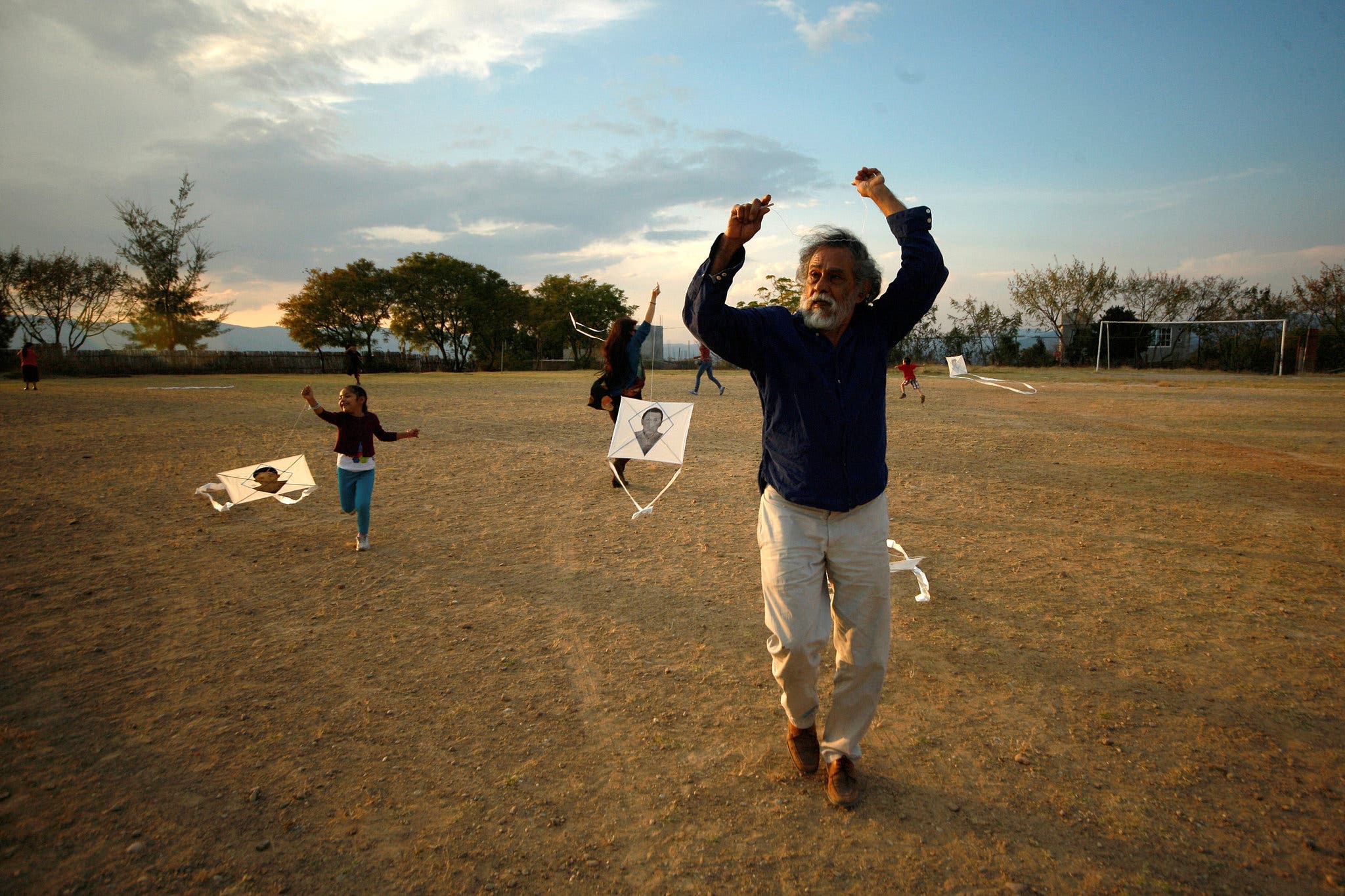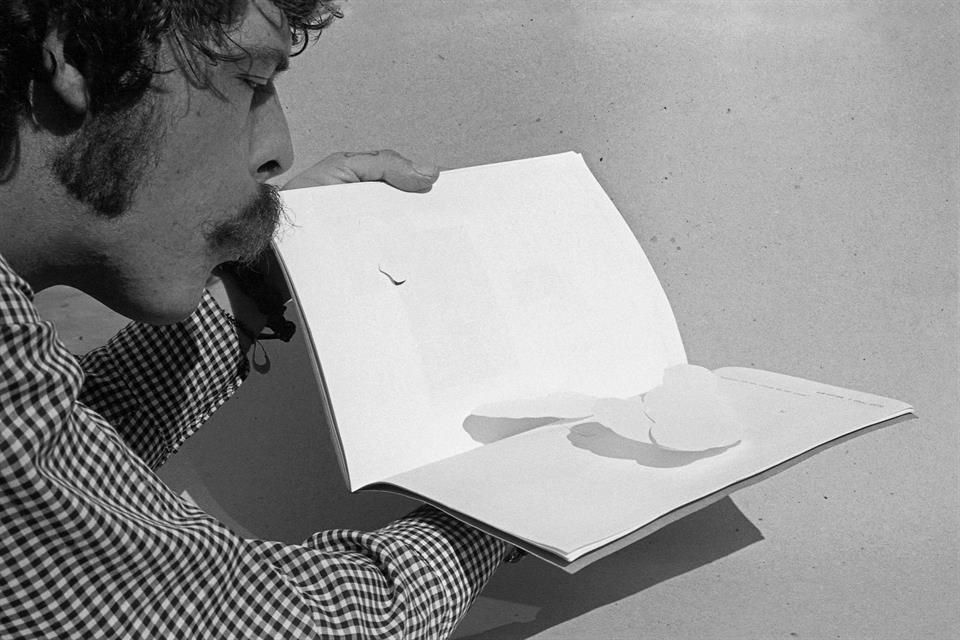Comunalidad [Communality]: An experiential concept that allows the comprehensive, natural, and common understanding of making life. It is a natural logical reasoning based on the interdependence of the temporal and spatial elements. It is the exercise of life and the capacities of the living beings comprised in it. It is the organic form that reflects the diversity contained in nature, in an integral interdependence of the elements that compose it.
Oaxaca: A Framework where the Community Happens
07/13/2022
From that confused and polarized atmosphere, arose new imageries to address the public realm, forms of protest, and the quest for self-management. From 2006 emerged a shared effort to renew the artistic social framework, which could no longer continue to rely on heroes or institutions, turning to networks of support, coexistence, and subjectivization instead.
Oaxaca is the state with the richest linguistic, biological, and cultural diversity in Mexico. It is divided into 8 regions, encompassing 570 municipalities—that amounts to 25% of the total number of municipalities in the country. About 400 of them are governed by usos y costumbres [‘customs and traditions’], a self-governance system practiced by indigenous communities to stand against historical abuses of the colonial regimes. It is also the exercise of the knowledge acquired and transmitted over generations, which has produced sustainable ecosystems and relationships with nature and its natural resources different from those promoted by capitalist agencies. In their best versions, ‘customs and traditions’ have achieved autonomous forms through traditional assemblies and the positions system, through which the members of a community get involved in the social making by assuming various community positions or offices. These functions are performed without monetary payment, determining deep bonds with the land, authority, work, and celebrations. The anthropologist Jaime Martínez Luna, originally from Guelatao de Juárez, has promoted significant ideas for approaching the cosmovisions of the indigenous peoples; two of them are:
Compartencia [Sharingness]: It is the essence of being one to the other and belonging to an infinite collectivity; rather than systems, it has to do with societies being in constant transformation.
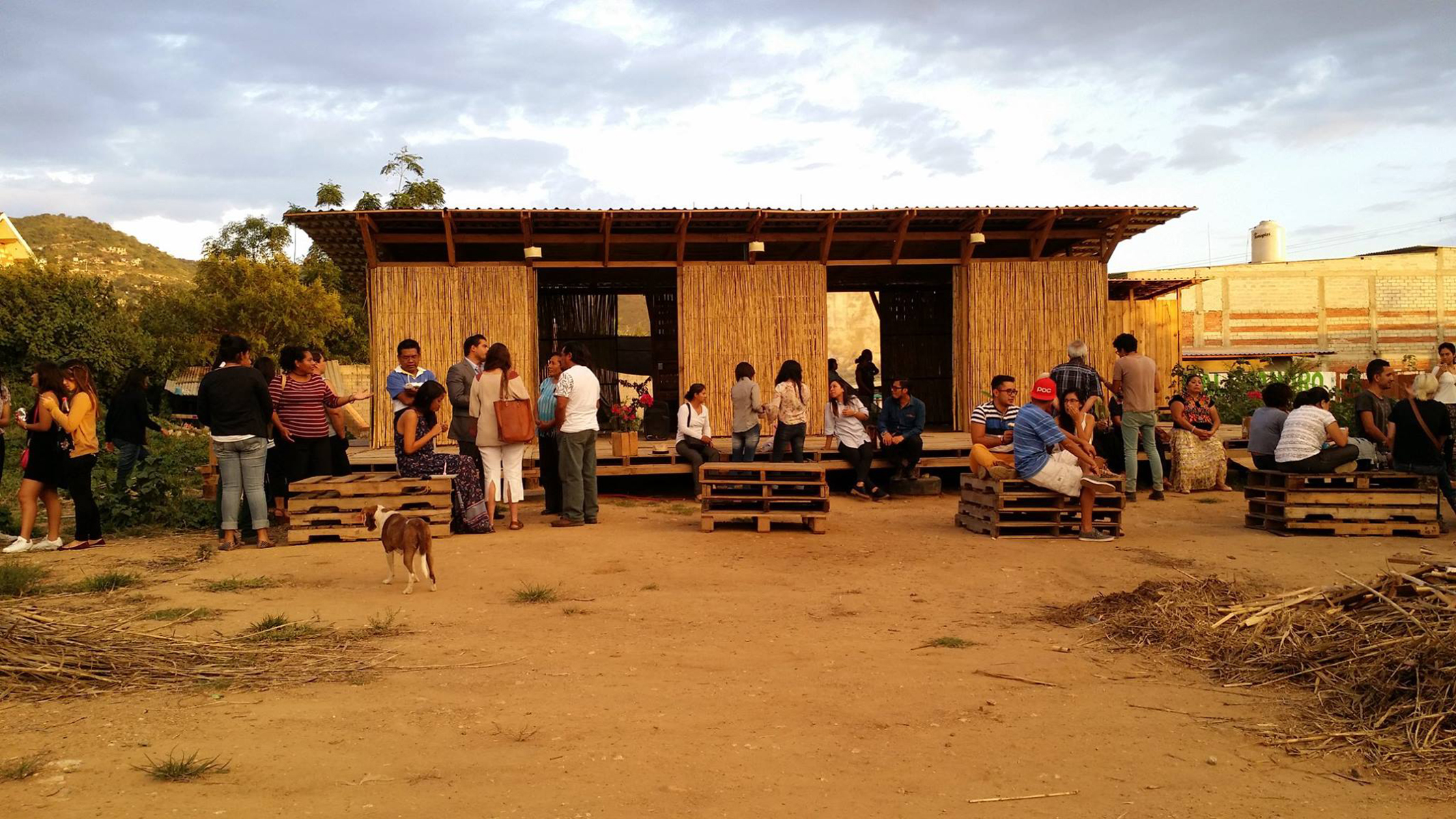
These community forms, in turn, are impregnated with complex and abundant relationships of acknowledgment, reciprocity, and exchange. An example of this is the tequio (from the Nahuatl tequitl, meaning 'work or tribute'), which is an organized form of working towards a collective benefit; the members of a community must contribute with materials or their own labor force to carry out or build a community work. Another example is the guelaguetza, meaning 'exchange of gifts and services;' it refers to the reciprocal relationships that unite people, mainly in celebrations and festivities. These relationships allow the creation of a cooperation network between subjects, families, and even towns.
In recent years, the ways of living of native communities have inspired self-organized educational programs such as the Itinerant Audiovisual Camp. In other cases, the communities have appropriated state infrastructures, adapting them to the needs of their regions, as in the case of the Zoogocho Community Musical High School and the Universidad Autónoma Comunal de Oaxaca. Communality has provided insightful ways and perspectives on the social in diverse contexts, even pollinating reflections on artistic creation to investigate participation, collectivity, and the common goods.
Abuses and Traditions
The year 2006 was cathartic for the social and political fabric of Oaxaca due to the violent eviction carried out by governor Ulises Ruíz against the teachers’ strike affiliated to the 22nd Section of the Coordinadora Nacional de Trabajadores de la Educación [National Coordination of Education Workers – CNTE]. This conflict gave rise to the Asamblea Popular de los Pueblos de Oaxaca [Popular Assembly of the Peoples of Oaxaca – APPO], which in alliance with the CNTE, worked towards the dismissal of Ulises Ruíz and demanded justice in the face of the multiple cases of abuse of power. Schools closed for nearly eight months, violent actions took place at all times, and a curfew around 9:00 p.m. marked the closing of the streets in a ghost town atmosphere. From the protests’ protocols emerged several forms of self-organization to support the demonstrations as well as to remedy the effects of the teachers' strike. The conflict gave way to numerous images produced by urban art collectives, community radio stations, neighborhood organizations for constructing barricades, food production, and various teaching-educational situations. The hope of removing Ulises Ruíz from office nourished these initiatives based on donations and the designation of surveillance, communication, and coordination positions, similar to the system of customs and traditions.
From that confused and polarized atmosphere, arose new imageries to address the public realm, forms of protest, and the quest for self-management. From 2006 emerged a shared effort to renew the artistic social framework, which could no longer continue to rely on heroes or institutions, turning to networks of support, coexistence, and subjectivization instead.
Until 2006, artistic training options were scarce. That year began the full university course of Plastic and Visual Arts at the Universidad Autónoma Benito Juárez de Oaxaca (UABJO), with an educational approach oriented towards the graphic, pictorial, and visual arts traditions of Oaxaca. The other educational infrastructures were based on the networks of culture houses and community graphic workshops promoted by Juan Alcázar, inspired by the model of the Taller Rufino Tamayo, founded in 1974 by Rufino Tamayo himself, and which functioned as a workshop with presses for community use and cooperative work for its sustainability. The artists trained in the Taller Rufino Tamayo usually founded their own workshops, creating an important network of training, production, exhibition, and commerce of graphic arts that continues to function today.
The appearance of La Curtiduría in 2006—a cultural center founded by the artist Demián Flores—marked a turning point in Oaxaca, as it offered workshops on contemporary languages, graphic thinking, and critical theory. By 2011, La Curtiduría consolidated the first educational program in contemporary art in alliance with the Faculty of Architecture of the UABJO and the Alfredo Harp Helú Foundation. The program lasted two years and within its first edition, it transitioned from the academic coordination of curator Olga Dávila and anthropologist Patricia Tovar to that of artist Mónica Castillo, who oriented the program towards community participation and collective making as an artistic discourse, bringing forward ideas based on social visuality, relational art, participation, and the possibilities of art and education. La Curtiduría contributed to the aim of transcending the positioning of traditional arts and seeking other creative forms in Oaxaca. Such works had a precedent in collectives such as Plan B, founded by the artists Luis Hampshire and Jessica Wozny, who carried out exhibitions and editorial projects in collaboration with colleagues who proposed artistic research based on contemporary languages and practices.
The new imaginative genealogies fostered by La Curtiduría sought to produce community forms as bodies of artistic work and not just as an accessory to a successful career or guilt laundering. From the first generation came out projects such as the Tlacolulokos collective, conformed by Darío Canul and Cosijoesa Cernas; A fly in the wall by Mónica Iturribarría; Casa Rosa by Adriana de la Rosa, among others, characterized by initiating exhibitions and meeting and dialogue spaces in their own or their family’s infrastructures.
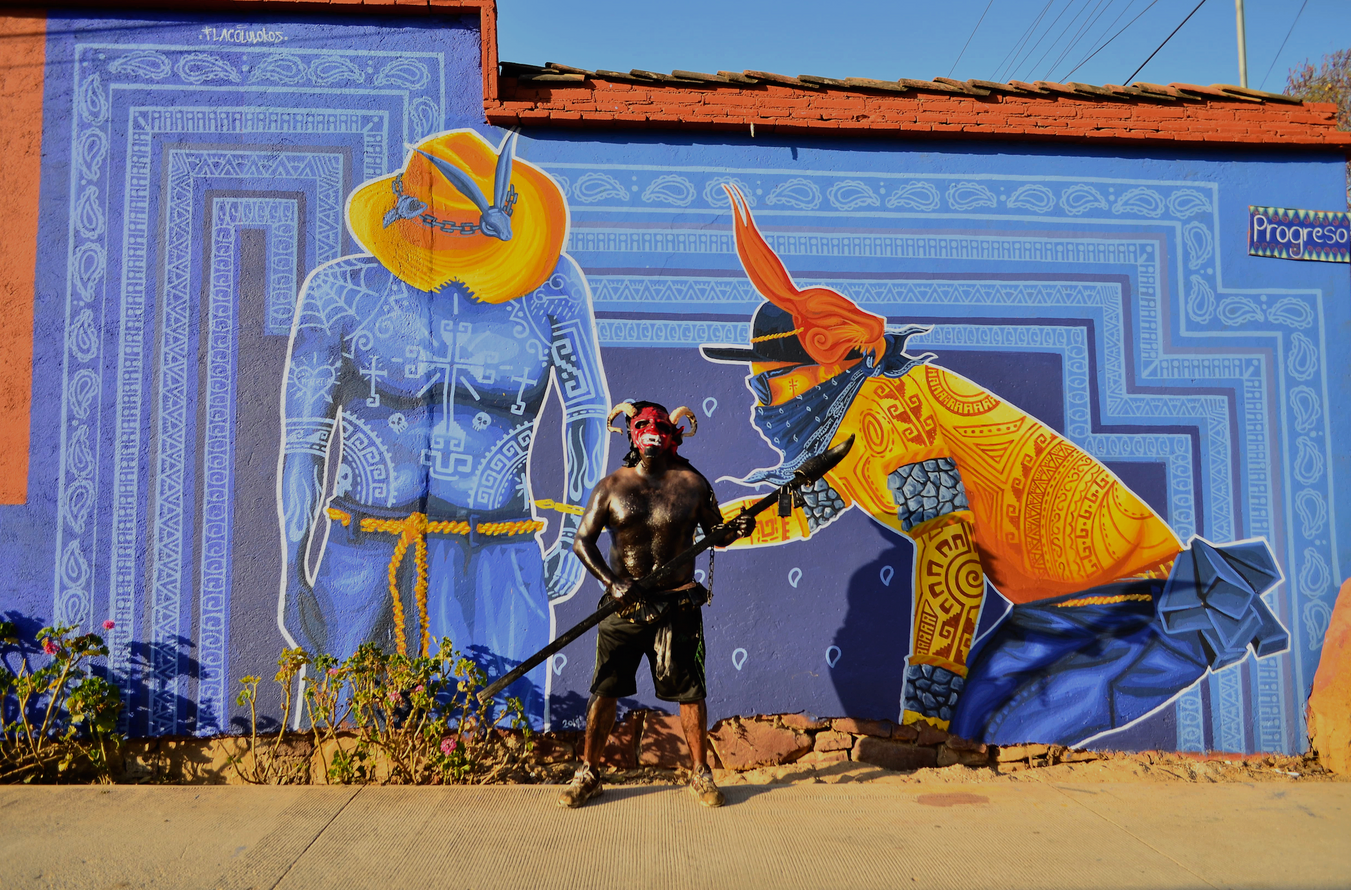
Nueva Patria - Lugar Común
The colonia Patria Nueva is an urban settlement on the outskirts of the city of Oaxaca, where my family emigrated in the 1990s. Typically, urban colonias in Mexico are ruled by a governance system centralized in the Comité de Vida Vecinal [Neighborhood Life Committee – COMVIVE], a hybrid organizational model based on the system of customs and traditions and state governance modes. After my schooling experience in La Curtiduría, in 2012, I decided to join the COMVIVE meetings to take part in the collective-making exercises of the community. In the beginning, my approach stayed within COMVIVE's policies and Francisco Toledo's imaginary of political negotiation and creation of cultural infrastructure. We carried out collective memory exercises, urban murals, and an attempt at a community library. Soon enough, the visibility of the initiatives made COMVIVE uncomfortable and it activated repressive strategies based on surveillance and control of the activities.
In 2014, after quite an unfriendly break with COMVIVE and in collaboration with artist Alex White, we began convening informal street meetings that we called Pachanguitas. From these meetings, we named the new neighborhood cell Nueva Patria [literally, ‘New Homeland’]. During that year, Mónica Castillo, who had been my teacher at La Curtiduría, and I decided to rent a space together to invite artists to collaborate and offer them a space to work and stay. Through the Pachanguitas, we amassed a group of young people and others who were disappointed with the neighborhood policies. Nueva Patria was integrated by Iván Arellano, Elodia Martínez, Josué Avendaño, Erika Monserrat, Roberto Juárez, Luis Santiago, Naxhielli Arreloa, Julio Cruz, Alex White, Bonfilio, Isidora (†), Natividad, Mónica Castillo, and myself. Mónica led a knowledge exchange program that consisted of casual conversations with neighbors to inquire about trades, crafts, or inherited knowledge that could be intertwined with artistic practices.
One of these encounters resulted in an embroidery workshop taught by artist Ana Hernández and Elodia, a neighbor who practices the traditional embroidery from the Isthmus region. This workshop inaugurated the knowledge-exchange dynamics as a strategy for making public community creations. For a given time, the neighbors' houses became open spaces, blurring the boundaries of private property. Our job was to manage the neighborhood bonds and trust among hosts, guests, and participants, providing comfortable, safe, generous, and friendly environments for the intersubjective flow.
In turn, Alex White obtained ArtEdu's support to create the Hotel de Plantas project, a public sculpture consisting of a hydroponic system for growing lettuce; at the same time, it served as a source of light for a vacant lot that used to be a dangerous place at night due to the lack of street lighting. From that moment on, the interest in permaculture was a constant for the group. The lettuce sculpture created shared responsibilities to check on the functioning of the water circulation system; the knowledge gained from taking care of the plants became a pretext for the community. In the end, we celebrated the lettuces by sharing them among the group and neighbors.
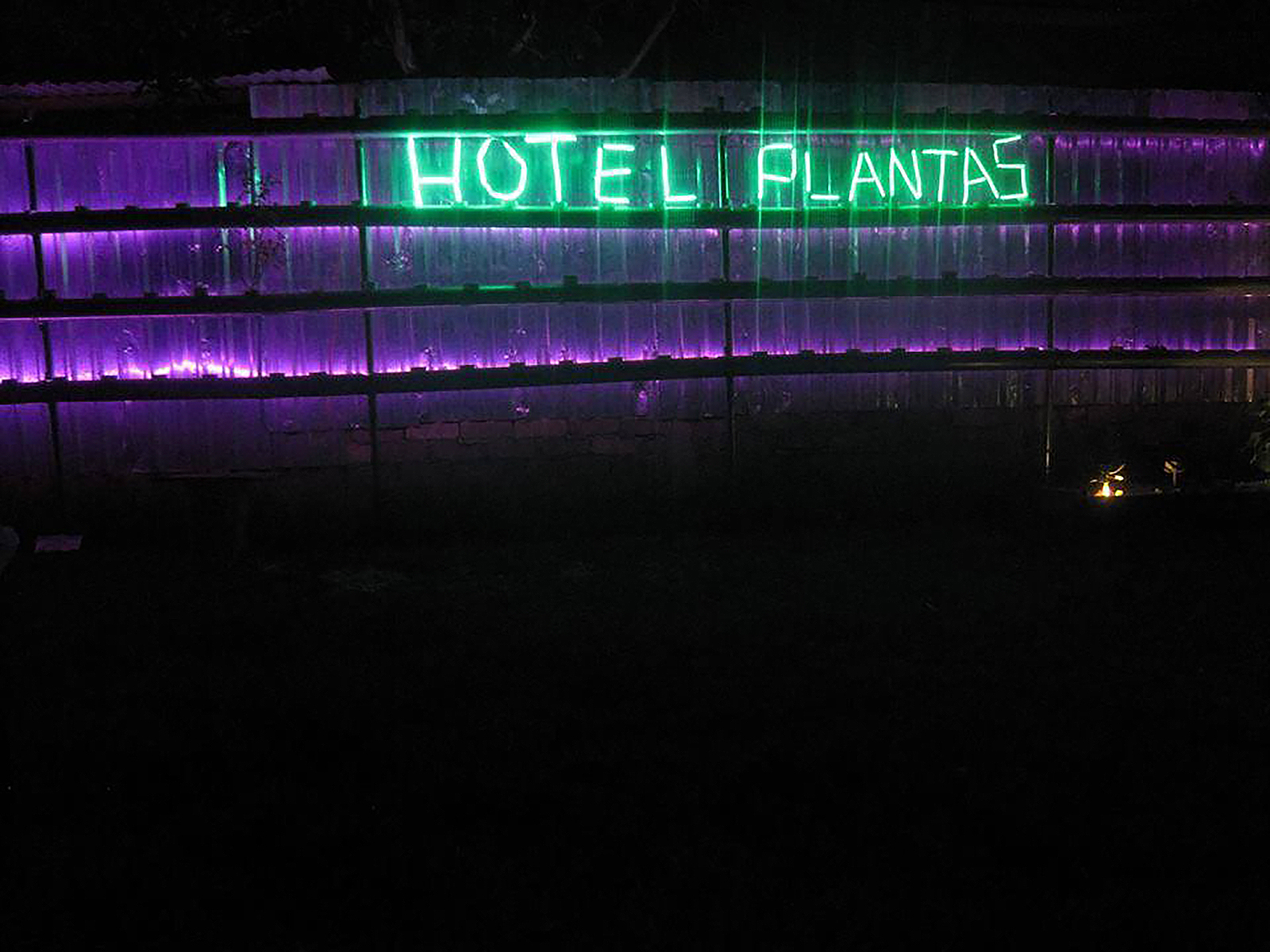

For her part, Naxhielli began taking photographs to document the activities, as well as making film screenings in unusual spaces to generate environments for neighborhood gatherings. Roberto led the creation of a series of murals with participation from various artists and urban art collectives.
Nueva Patria functioned through subtle economies based on donations, friendship, leisure, reciprocity, celebration, exchanges, and other know-hows that the neighbors—mostly migrants from indigenous communities—have adapted to the urban environment. We produced social events that breathed artistic intentions into the neighborhood life, giving rise to a community plasticity that favored desire, imagination, and pursuing initiatives.
In 2016, Nueva Patria received funding from ArtsCollaboratory to develop the Laboratorio de Culturas Cooperativas [Cooperative Cultures Lab – LCC], which was a physical space that we built through tequios with volunteers, neighbors, schools, and friends. The basic structure consisted of a multipurpose space and a community garden. We then changed the name to Lugar Común [literally, ‘Common Place’] and transitioned from informality to a non-governmental organization, incorporating accounting, management, and other money-related complexities into the group's economies. Some members were overwhelmed and distanced themselves from the project.
The LCC set the objectives of proposing self-determination as opposed to the notion of the paternalistic government, encouraging assembly formats for decision-making, and fostering transformations through artistic practices in the surroundings of Lugar Común. Between 2016 and 2018, the LCC brought together diverse neighbor initiatives, events from other non-governmental and artistic organizations, international exchanges, and social economies, entwined in a complex network of the formerly known as "subtle economies." There were many obstacles, though, mainly caused by the worst versions of governmental regimes based on welfarism, political hierarchy, patriarchy, epistemic hegemony, diversion of resources, omission of desire, among other situations of colonial and extractivist tendencies.
With the end of the ArtsCollaboratory funding in 2018, we dismantled the LCC and the project has remained dormant ever since. The presence of the LCC expanded the local imaginary of neighborhood ways of life and cohabitation, and motivated displacements among the participants, as well as many other initiatives aimed at inquiring into collective plasticity from the singular and the common.

The transitions that occurred from 2012 to 2018, gave us the opportunity to experience hybrid environments between self-management and being an institution. Therein, we found possible contexts of shared learning through coming together, discussing, collaborating, sowing, building, cooking, celebrating, holding courses, workshops, and other community events that produced encounters between different ages, genders, provenances, classes, subjectivities, and discourses.
The neighborhood experiences with Nueva Patria and Lugar Común have mainly influenced Naxhielli, who now promotes feminist activism at a micropolitical level in the community, through the sporadic activation of workshops and meetings related to Lugar Común. For his part, after leading the garden of Lugar Común and other initiatives linked to agriculture and permaculture, Roberto has arranged a patch of his family land for reconstructing a new version of the LCC; this possibility keeps us with shared visions towards the future.
